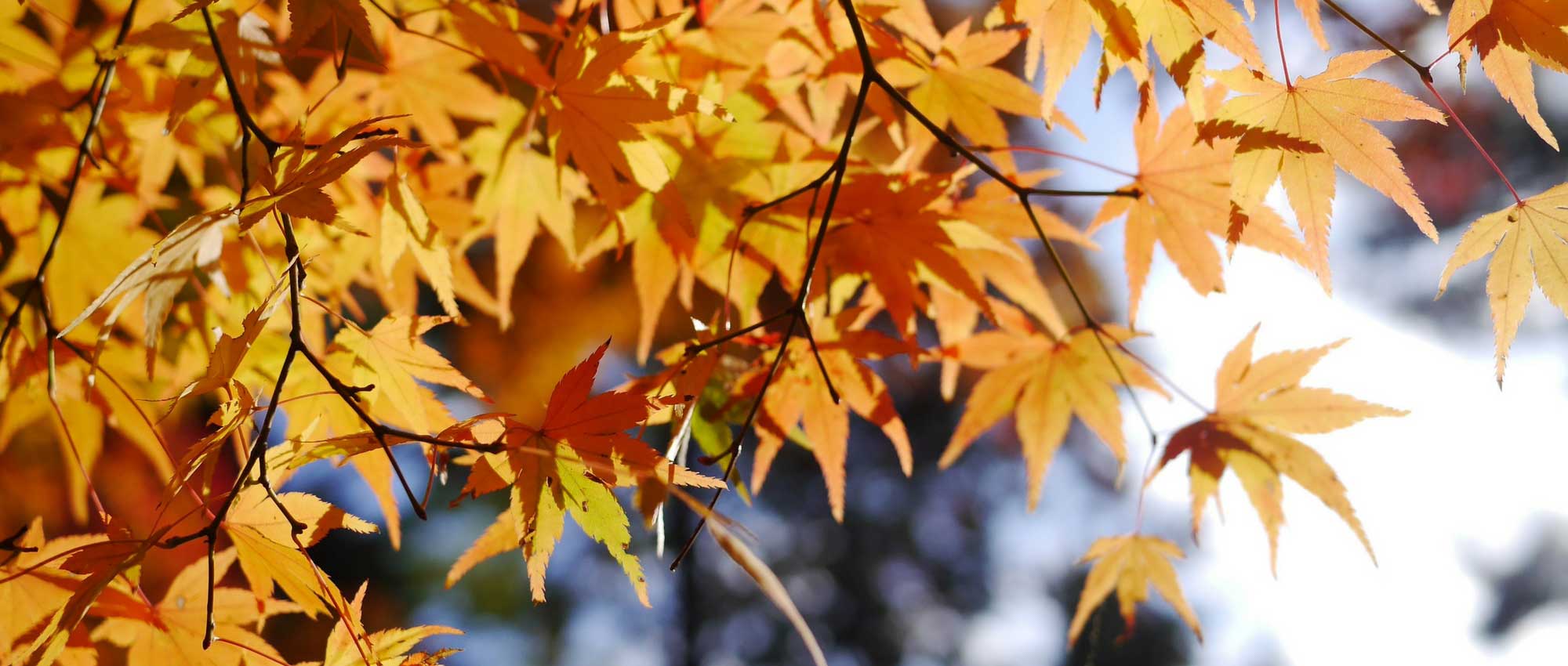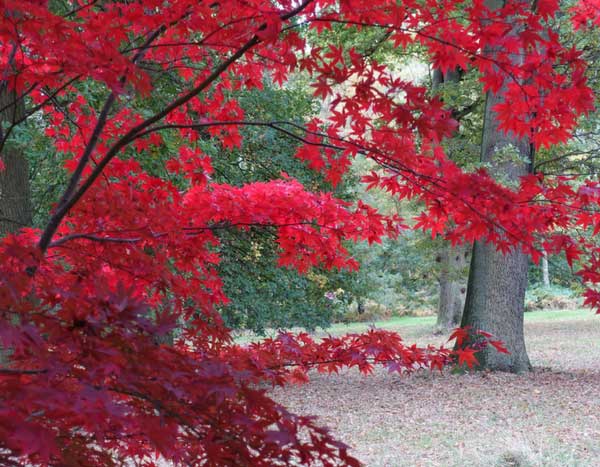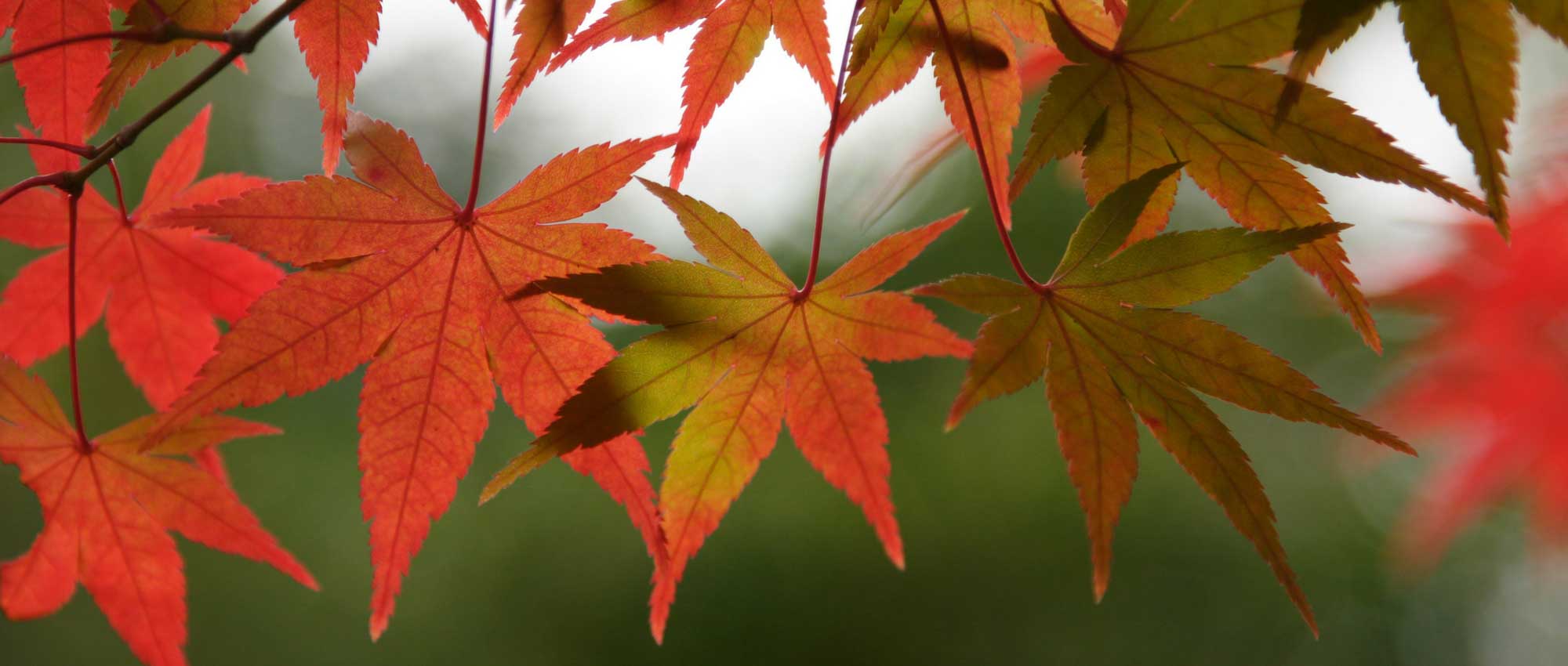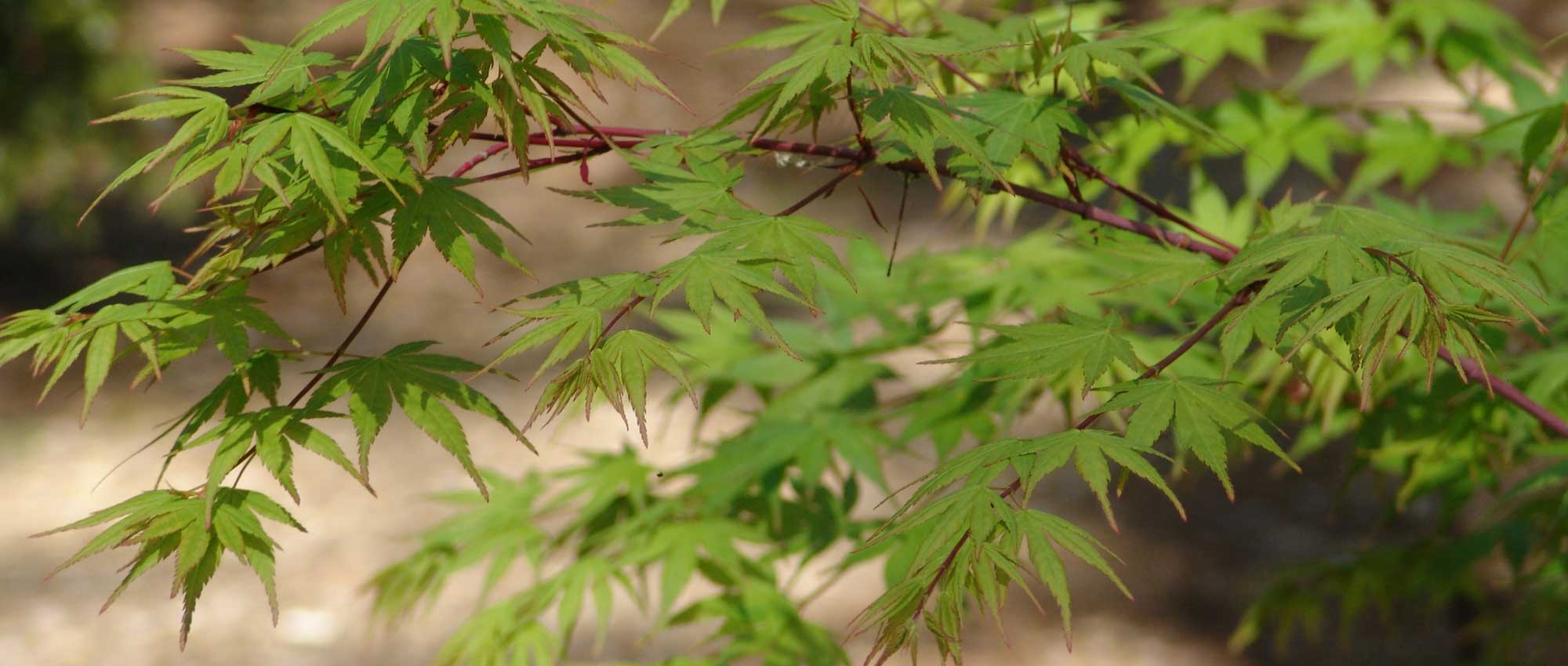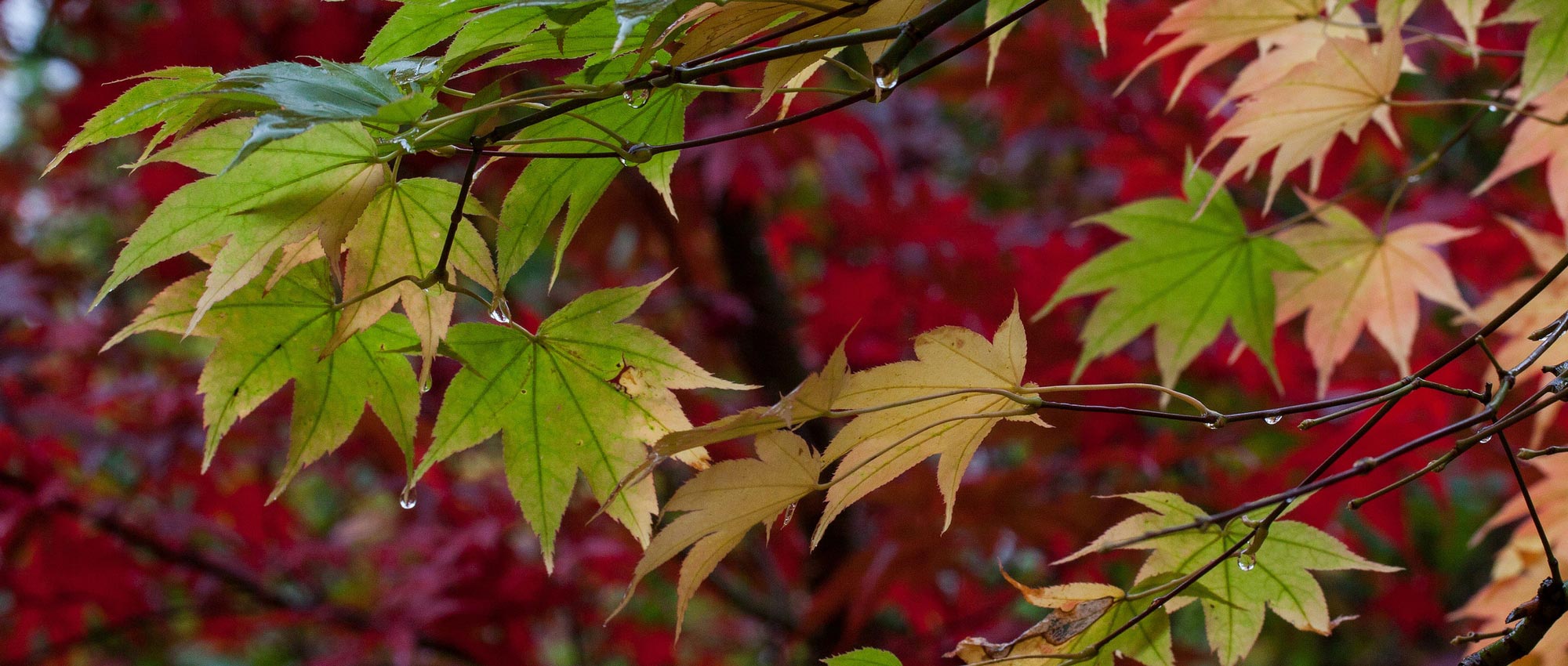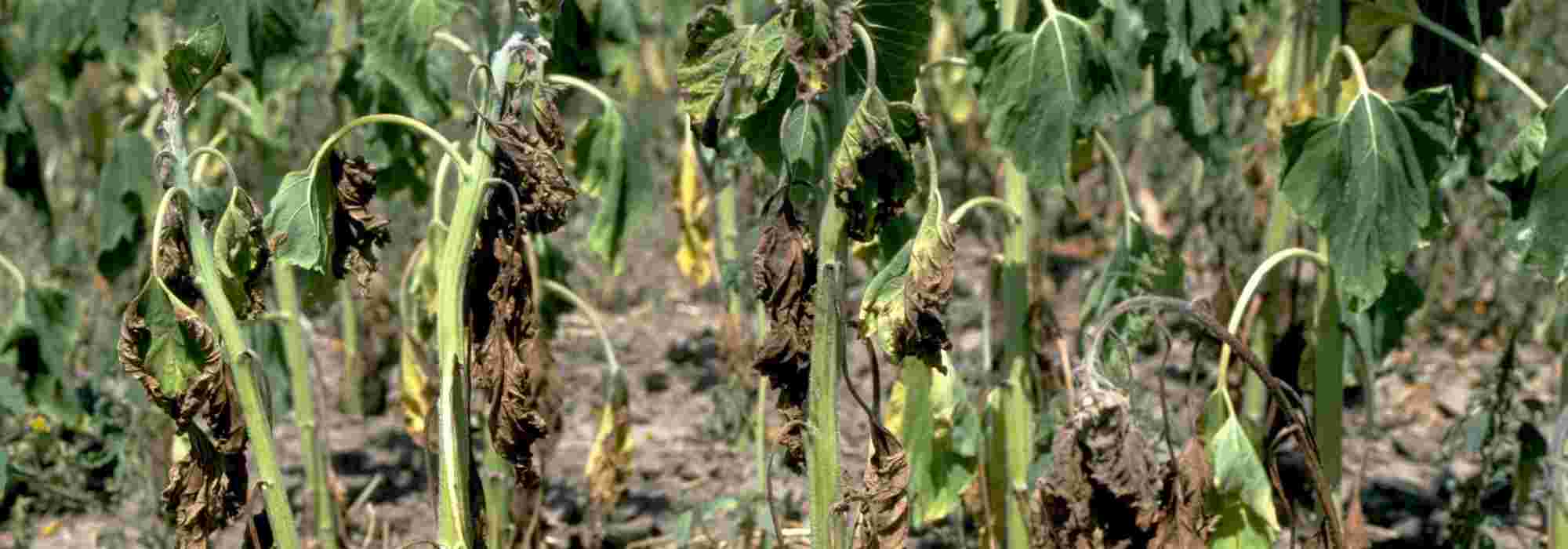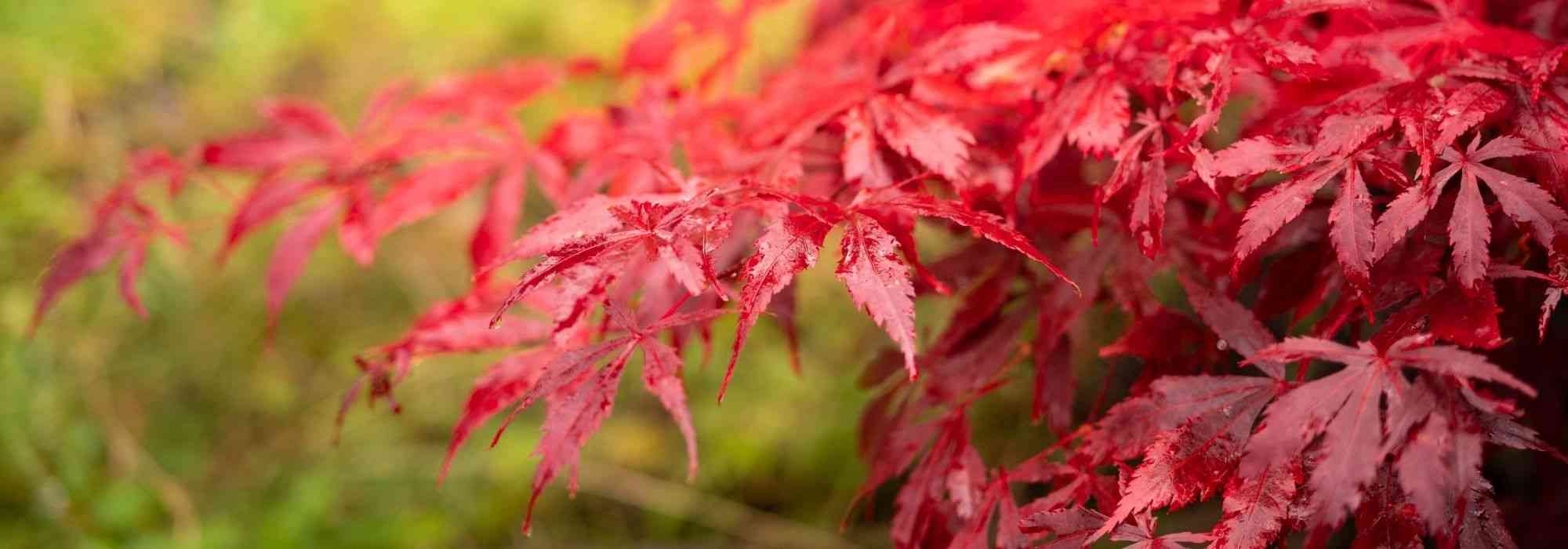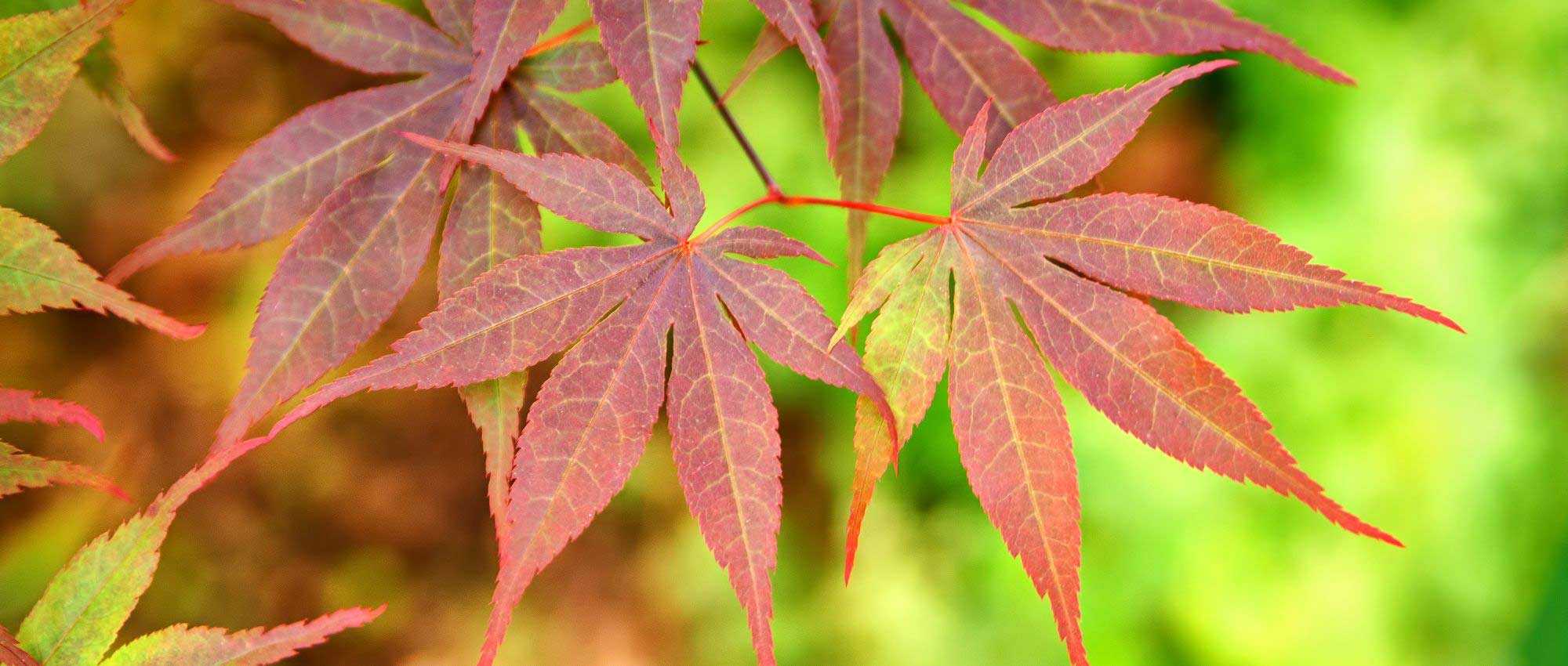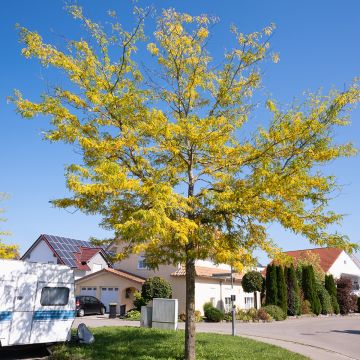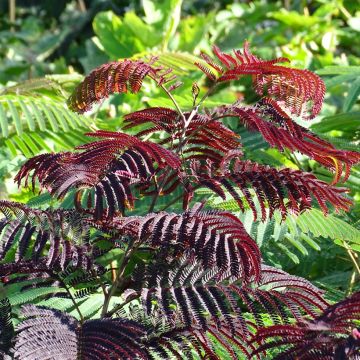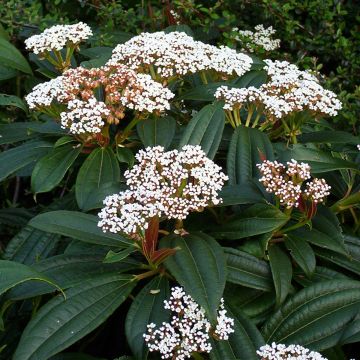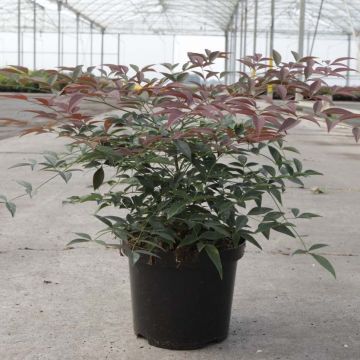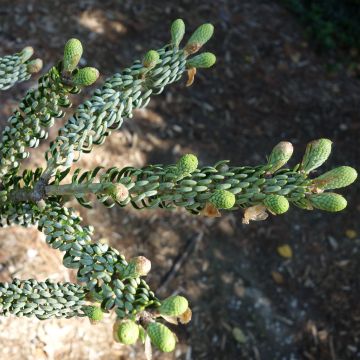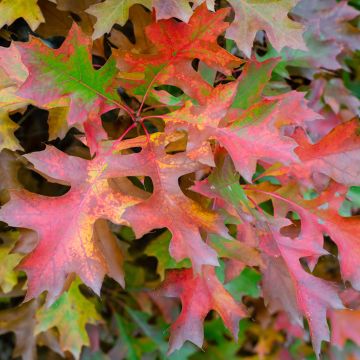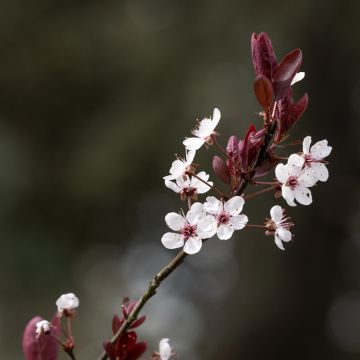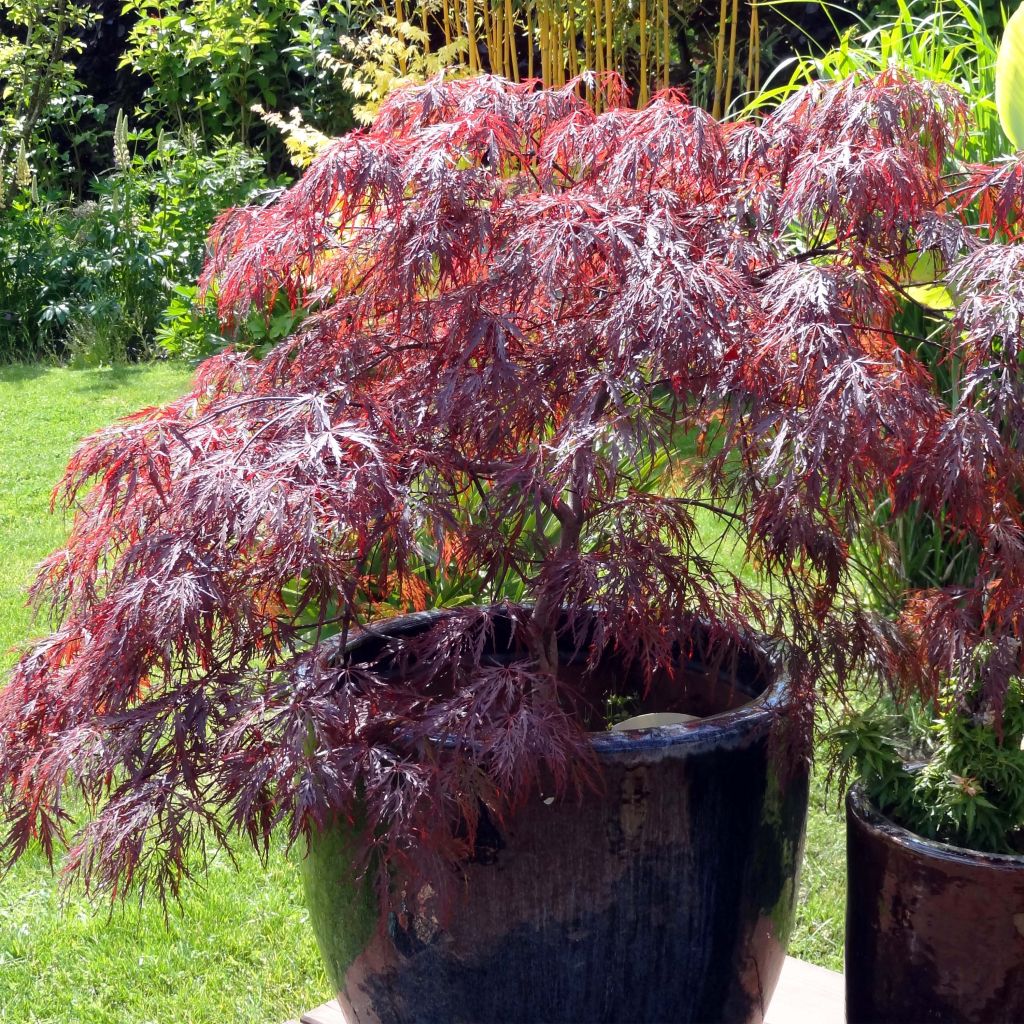

Acer palmatum Dissectum Inaba-Shidare - Japanese Maple
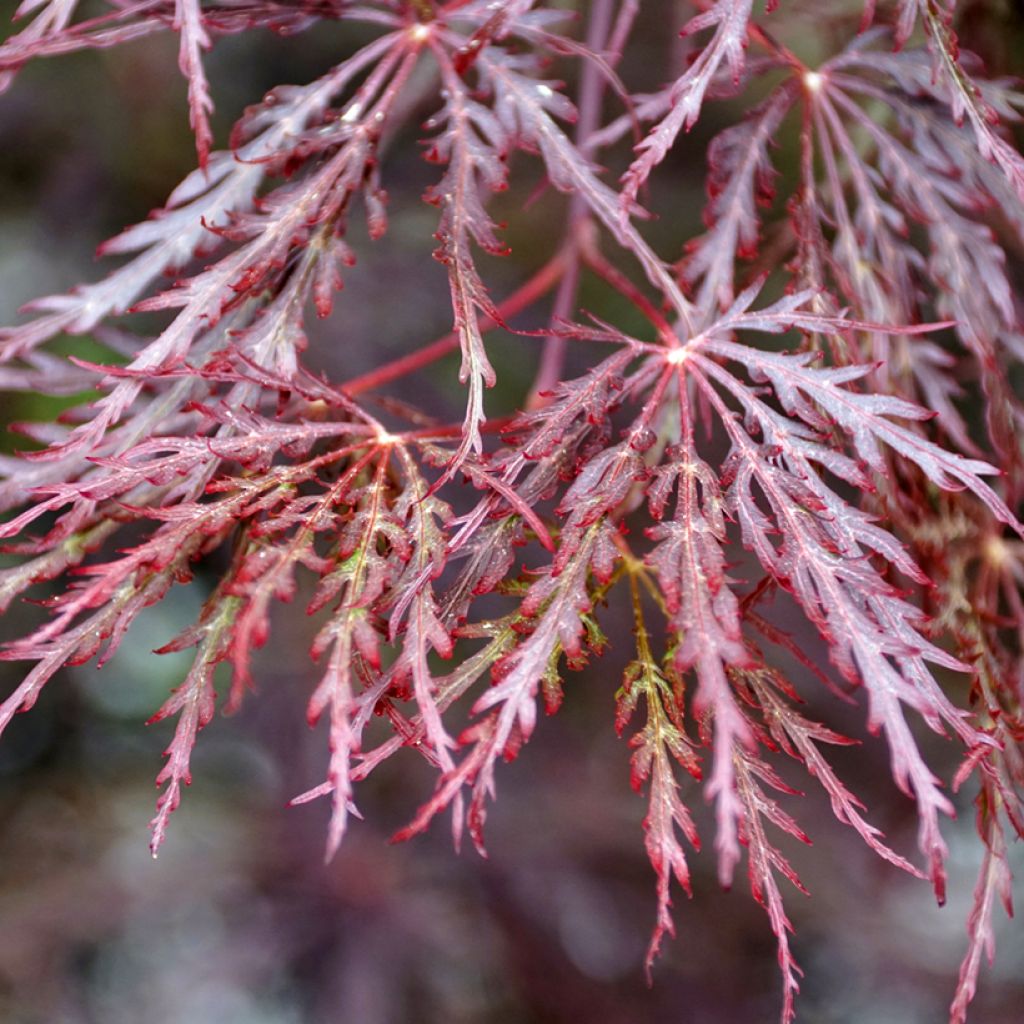

Acer palmatum Dissectum Inaba-Shidare - Japanese Maple
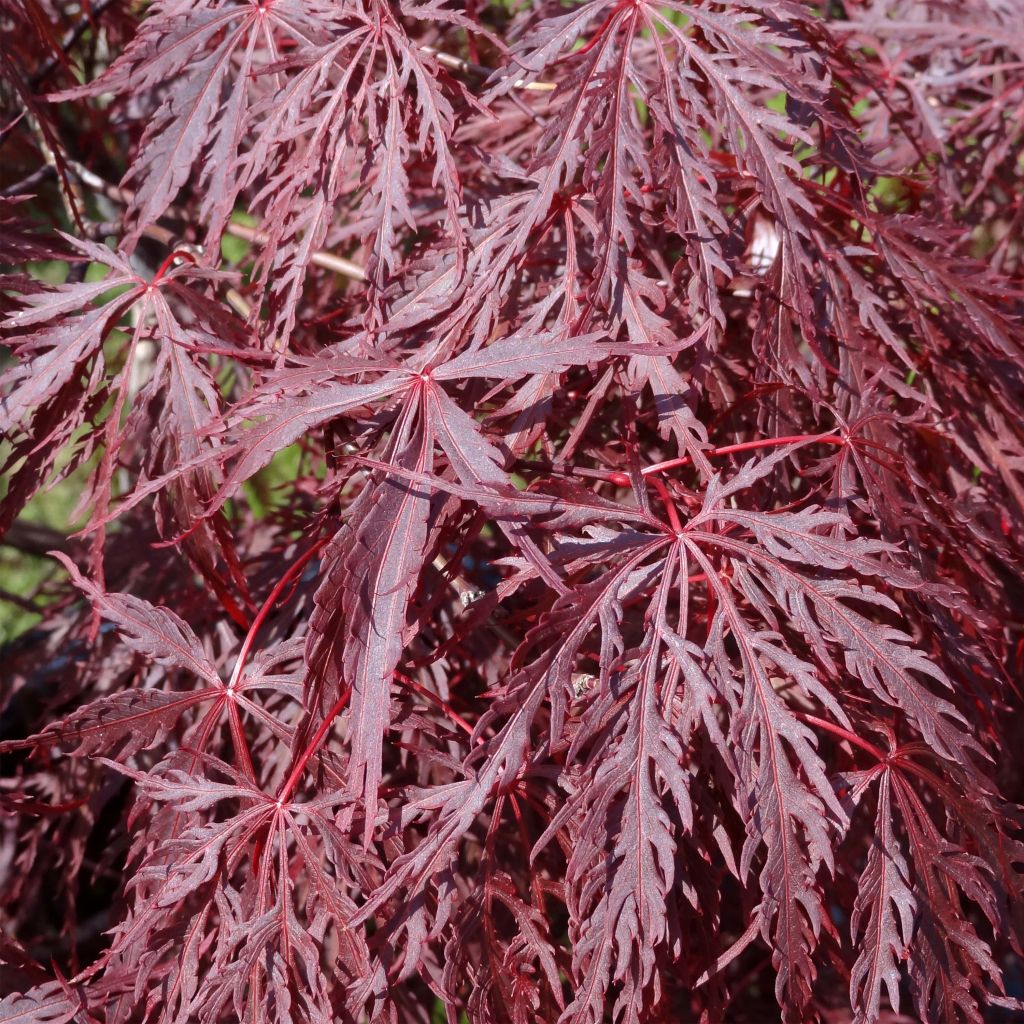

Acer palmatum Dissectum Inaba-Shidare - Japanese Maple
Acer palmatum Dissectum Inaba-Shidare - Japanese Maple
Acer palmatum Dissectum Inaba-Shidare
Japanese Maple, Palmate Maple
Plant ordered and received in November. I'm a bit worried because the bush has very few leaves at the moment, and on top of that, they are falling off. I planted it in a pot. Let's hope it recovers well, and let's wait for spring!
Dorabella, 09/11/2020
Special offer!
Receive a €20 voucher for any order over €90 (excluding delivery costs, credit notes, and plastic-free options)!
1- Add your favorite plants to your cart.
2- Once you have reached €90, confirm your order (you can even choose the delivery date!).
3- As soon as your order is shipped, you will receive an email containing your voucher code, valid for 3 months (90 days).
Your voucher is unique and can only be used once, for any order with a minimum value of €20, excluding delivery costs.
Can be combined with other current offers, non-divisible and non-refundable.
Home or relay delivery (depending on size and destination)
Schedule delivery date,
and select date in basket
This plant carries a 24 months recovery warranty
More information
We guarantee the quality of our plants for a full growing cycle, and will replace at our expense any plant that fails to recover under normal climatic and planting conditions.
Would this plant suit my garden?
Set up your Plantfit profile →
Description
Acer palmatum 'Inaba-Shidare' is a superb variety of Japanese maple and one of the largest from the Dissectum form. Its dense foliage is particularly fine and cut, and offers a range of purple to violet tones, ending with a flaming red at the end of the season. This cultivar has many advantages and is among the most planted in Europe. It is valued for the red colour of its foliage (without any trace of green when exposed to the sun), its slightly spreading and gracefully drooping habit, and its robustness and ease of cultivation in non-limestone soil. It is essential in a Zen or Japanese-style garden and deserves a prominent place near the house or on a non-burning terrace.
Originating from eastern China, Korea, and Japan, Acer palmatum is the origin of numerous horticultural varieties that compete in beauty. The Japanese maple belongs to the Sapindaceae family. It is relatively hardy but only tolerates limestone-free soils.
The 'Inaba-Shidare' cultivar, which grows relatively slowly, develops a spreading habit over time, carried by slightly weeping branches, and reaches an average of 3 m (9.8 ft) in all directions. This small tree has brown to reddish-brown bark and develops magnificent deciduous leaves, which are intensely and finely palmate. In this variety, the foliage is brownish purple when it buds, takes on a very violet purple colour in summer, and then becomes bright red in autumn before falling. The leaves are opposite, 5 cm to 10 cm (2 in to 3.9 in) in length, divided into 5 to 7 very fine, elongated lobes, and strongly toothed at the edges. The discreet flowering takes place in May-June. The flowers, grouped in small clusters, sometimes produce fruits with curved wings called samaras, about 3 cm (1.2 in) long.
Acer palmatum 'Inaba-Shidare' prefers acidic, moist, fertile, flexible, and well-drained soil, in a sunny or semi-shaded position sheltered from cold and dry winds. Compact yet sculptural, it is very suitable for small gardens, for decorating terraces and patios, as well as shady rockeries. Its remarkable habit and colour, which make a statement in the garden, will be enhanced by ground-covering plants such as silver baskets, Bergenia cordifolia, Ophiopogon planiscapus 'Nigra', or creeping bugles. Azaleas, pieris, rhododendrons, wild camellias, and heathers will be its most beautiful companions. It can be trained into a magnificent bonsai in a flat pot. Combine several varieties of Japanese maples to vary the colours and structures of the foliage, the effect is always dazzling at the end of the season.
Tip: Treat to prevent Verticillium attacks.
Acer palmatum Dissectum Inaba-Shidare - Japanese Maple in pictures
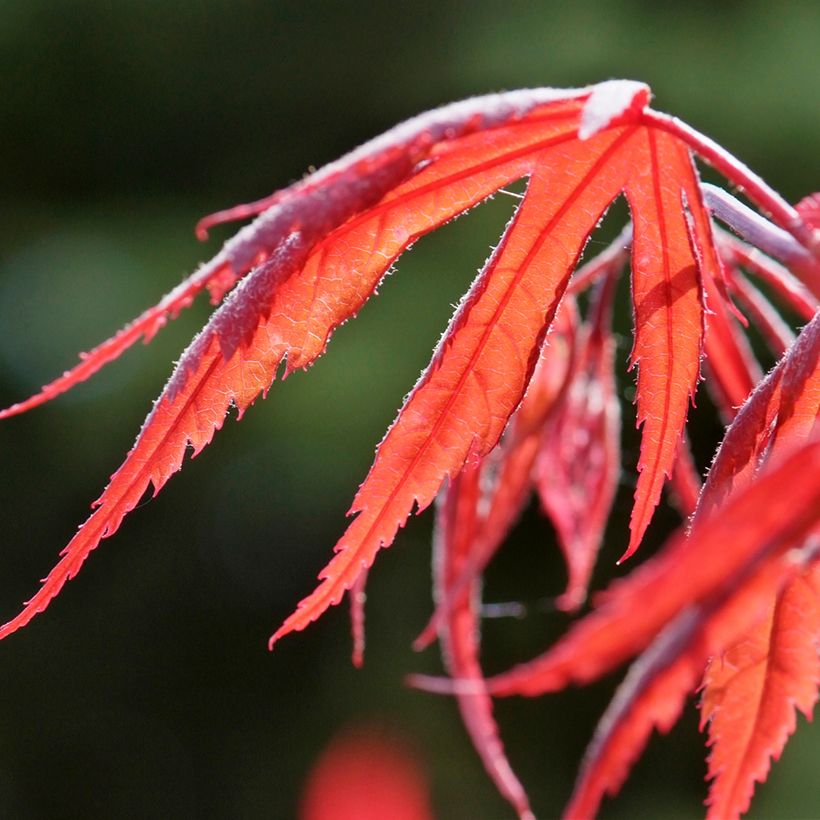

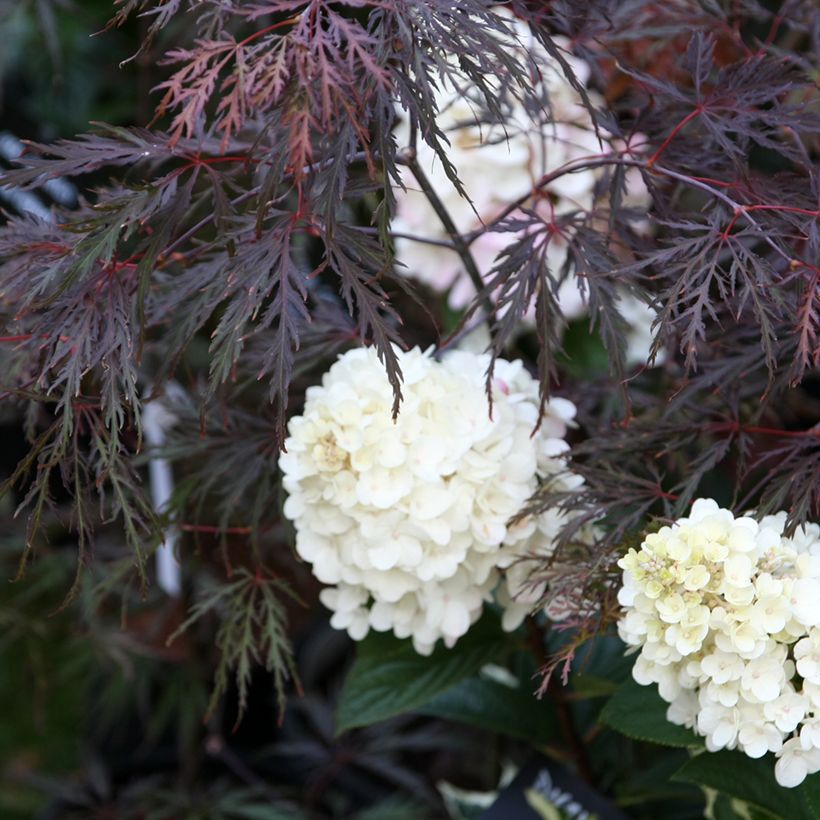

Plant habit
Flowering
Foliage
Botanical data
Acer
palmatum
Dissectum Inaba-Shidare
Aceraceae
Japanese Maple, Palmate Maple
Cultivar or hybrid
Planting and care
Plant in spring or autumn in preferably light, neutral to acidic, humus-bearing, deep, loose, and well-drained soil, in a semi-shaded position or in morning sun and sheltered from cold and dry winds. The colours will be more vibrant if the bush receives a few hours of direct sunlight, preferably in the morning. The soil should be kept moist with mulching in summer, if necessary, but should not be waterlogged, especially in winter. Apply a significant amount of organic matter every 3 years to ensure a good humus content in the soil. Mulch, water, and mist the foliage on hot evenings. Winter pruning is limited to balancing the branches. Treat preventively against scale insects and Verticillium, a fungal disease that occurs in heavy and overly moist soil.
Planting period
Intended location
Care
Planting & care advice
-
, onOrder confirmed
Reply from on Promesse de fleurs
Similar products
Haven't found what you were looking for?
Hardiness is the lowest winter temperature a plant can endure without suffering serious damage or even dying. However, hardiness is affected by location (a sheltered area, such as a patio), protection (winter cover) and soil type (hardiness is improved by well-drained soil).

Photo Sharing Terms & Conditions
In order to encourage gardeners to interact and share their experiences, Promesse de fleurs offers various media enabling content to be uploaded onto its Site - in particular via the ‘Photo sharing’ module.
The User agrees to refrain from:
- Posting any content that is illegal, prejudicial, insulting, racist, inciteful to hatred, revisionist, contrary to public decency, that infringes on privacy or on the privacy rights of third parties, in particular the publicity rights of persons and goods, intellectual property rights, or the right to privacy.
- Submitting content on behalf of a third party;
- Impersonate the identity of a third party and/or publish any personal information about a third party;
In general, the User undertakes to refrain from any unethical behaviour.
All Content (in particular text, comments, files, images, photos, videos, creative works, etc.), which may be subject to property or intellectual property rights, image or other private rights, shall remain the property of the User, subject to the limited rights granted by the terms of the licence granted by Promesse de fleurs as stated below. Users are at liberty to publish or not to publish such Content on the Site, notably via the ‘Photo Sharing’ facility, and accept that this Content shall be made public and freely accessible, notably on the Internet.
Users further acknowledge, undertake to have ,and guarantee that they hold all necessary rights and permissions to publish such material on the Site, in particular with regard to the legislation in force pertaining to any privacy, property, intellectual property, image, or contractual rights, or rights of any other nature. By publishing such Content on the Site, Users acknowledge accepting full liability as publishers of the Content within the meaning of the law, and grant Promesse de fleurs, free of charge, an inclusive, worldwide licence for the said Content for the entire duration of its publication, including all reproduction, representation, up/downloading, displaying, performing, transmission, and storage rights.
Users also grant permission for their name to be linked to the Content and accept that this link may not always be made available.
By engaging in posting material, Users consent to their Content becoming automatically accessible on the Internet, in particular on other sites and/or blogs and/or web pages of the Promesse de fleurs site, including in particular social pages and the Promesse de fleurs catalogue.
Users may secure the removal of entrusted content free of charge by issuing a simple request via our contact form.
The flowering period indicated on our website applies to countries and regions located in USDA zone 8 (France, the United Kingdom, Ireland, the Netherlands, etc.)
It will vary according to where you live:
- In zones 9 to 10 (Italy, Spain, Greece, etc.), flowering will occur about 2 to 4 weeks earlier.
- In zones 6 to 7 (Germany, Poland, Slovenia, and lower mountainous regions), flowering will be delayed by 2 to 3 weeks.
- In zone 5 (Central Europe, Scandinavia), blooming will be delayed by 3 to 5 weeks.
In temperate climates, pruning of spring-flowering shrubs (forsythia, spireas, etc.) should be done just after flowering.
Pruning of summer-flowering shrubs (Indian Lilac, Perovskia, etc.) can be done in winter or spring.
In cold regions as well as with frost-sensitive plants, avoid pruning too early when severe frosts may still occur.
The planting period indicated on our website applies to countries and regions located in USDA zone 8 (France, United Kingdom, Ireland, Netherlands).
It will vary according to where you live:
- In Mediterranean zones (Marseille, Madrid, Milan, etc.), autumn and winter are the best planting periods.
- In continental zones (Strasbourg, Munich, Vienna, etc.), delay planting by 2 to 3 weeks in spring and bring it forward by 2 to 4 weeks in autumn.
- In mountainous regions (the Alps, Pyrenees, Carpathians, etc.), it is best to plant in late spring (May-June) or late summer (August-September).
The harvesting period indicated on our website applies to countries and regions in USDA zone 8 (France, England, Ireland, the Netherlands).
In colder areas (Scandinavia, Poland, Austria...) fruit and vegetable harvests are likely to be delayed by 3-4 weeks.
In warmer areas (Italy, Spain, Greece, etc.), harvesting will probably take place earlier, depending on weather conditions.
The sowing periods indicated on our website apply to countries and regions within USDA Zone 8 (France, UK, Ireland, Netherlands).
In colder areas (Scandinavia, Poland, Austria...), delay any outdoor sowing by 3-4 weeks, or sow under glass.
In warmer climes (Italy, Spain, Greece, etc.), bring outdoor sowing forward by a few weeks.






























